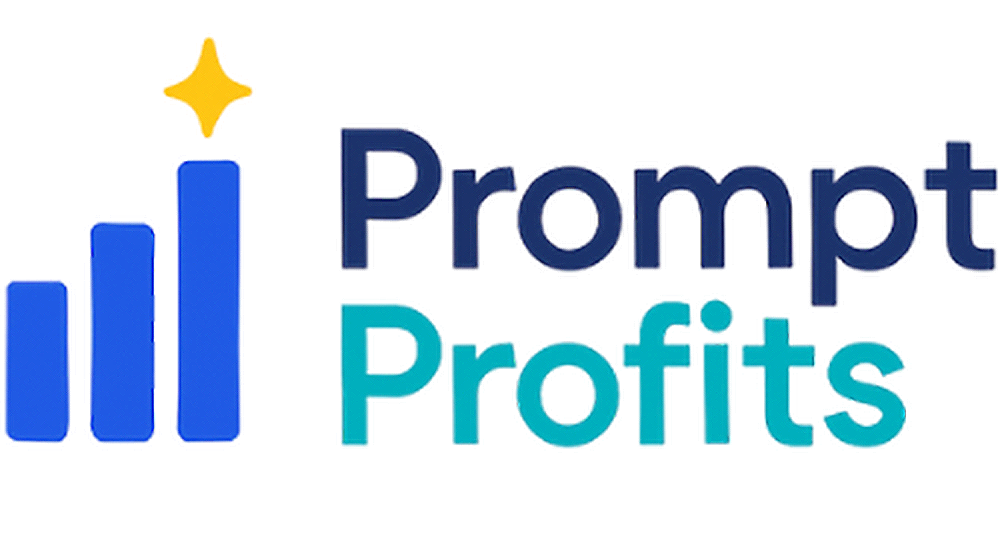This AI Prompt Turns Ideas into Income Streams — Here’s How It Works

Estimated reading time: 4 min
Imagine having a creative partner that never runs out of ideas, understands market needs, and can help you blueprint a potential income stream in minutes. That's the power of a well-crafted AI prompt. It's not just about asking a question; it's about designing a query that unlocks strategic, actionable output.
Today, we're diving into one such "master prompt" framework. This isn't a magic bullet, but a structured approach to using AI (like ChatGPT, Claude, or Gemini) to transform vague thoughts into concrete concepts for side hustles, digital products, or even content strategies. We'll break down how it works, so you can adapt it and start generating your own revenue-generating ideas.
⚙️ The Anatomy of an "Idea-to-Income" Prompt
A powerful prompt doesn't just ask "Give me side hustle ideas." It guides the AI by providing context, constraints, and desired outcomes. Here’s a foundational structure you can adapt:
The Core Prompt Framework:
"Act as a [Your Ideal Expert, e.g., 'Seasoned Solopreneur Coach' or 'Digital Product Strategist']. My goal is to [Your Specific Objective, e.g., 'create a low-cost digital product for busy parents' or 'identify a weekend side hustle that requires no coding'].
My target audience is [Describe Your Audience, e.g., 'beginner photographers' or 'remote workers looking for productivity hacks'].
I have access to these skills/tools: [List Your Skills/Tools, e.g., 'ChatGPT, Canva, basic social media marketing' or 'strong writing skills, understanding of SEO'].
I prefer ideas that are [Your Preferences, e.g., 'scalable with automation,' 'quick to validate,' 'focused on solving X problem'].
Please generate 5 distinct ideas for [Your Objective]. For each idea, provide:
1. A catchy name/concept.
2. The core problem it solves for the target audience.
3. A simple monetization strategy (e.g., one-time sale, subscription, affiliate).
4. The first 3 actionable steps to test or launch this idea in the next 7 days.
5. Potential AI tools that could help build or market this."💡 Why This Framework Works
- Role-Playing ("Act as a..."): This sets the AI's persona, influencing the tone and type of advice it provides. It taps into the AI's vast training data for that specific role.
- Clear Objective & Audience: This focuses the AI on relevant solutions. Generic ideas are rarely profitable; specificity is key. If you're unsure about your niche, you might find our post on AI Side Hustles for Beginners helpful for initial brainstorming.
- Resource & Preference Constraints: This grounds the AI's suggestions in reality. It won't suggest ideas you're unequipped or unwilling to pursue.
- Structured Output Request: Asking for specific components (name, problem, monetization, first steps, tools) forces the AI to think through the idea more completely, giving you a mini-blueprint rather than just a title. This is crucial for turning ideas into action, a concept we explored in our guide to your first profitable AI blog.
- Action-Oriented ("first 3 actionable steps"): This pushes beyond mere ideation into practical application, which is the core of any successful hustle.
🚀 Example in Action: Hypothetical Case Study
Let's say you input:
- Expert: "Digital Nomad Mentor"
- Objective: "Develop a micro-service I can offer to other remote workers."
- Audience: "Freelancers and solopreneurs struggling with content creation."
- Skills/Tools: "ChatGPT-4, basic graphic design with Canva, good at organizing information."
- Preferences: "Service deliverable in under 1 hour per client, high perceived value."
Potential AI Output (Idea 1 of 5):
- Name/Concept: "AI Content Repurposing Power-Hour"
- Problem Solved: Helps busy freelancers get more mileage from existing content (blog posts, videos) without spending hours creating new material.
- Monetization: One-time fee per "Power-Hour" session (e.g., $49 - $99).
- First 3 Steps:
- Create a simple service description and 3 sample "before & after" repurposing examples using your own content.
- Offer 3 free "beta" sessions to remote workers in online communities in exchange for testimonials.
- Set up a simple booking link (Calendly, Ko-fi) and a way to receive content from clients (Google Drive, Dropbox).
- AI Tools: ChatGPT (for summarizing and reformatting), Canva (for creating social snippets from text), Descript (if repurposing audio/video).
This is just one simplified example. The AI would generate four more, each with this level of detail, giving you a range of actionable starting points.
🛠️ Your Turn: Adapt and Experiment
Take this framework and customize it. The more specific you are with your inputs, the more targeted and valuable the AI's output will be.
- Change the "expert" role.
- Define different target audiences.
- List unique skills or interests.
Don't just generate ideas; interrogate them. Ask follow-up prompts like, "For idea #1, what are three potential challenges and how could I overcome them?" or "Generate 5 marketing slogans for idea #2."
An AI prompt is not a one-shot command; it's the start of a conversation that can lead directly to your next income stream.
🧠 Ready to explore more ways AI can fuel your entrepreneurial journey?
👉 Discover how to automate your AI side hustle systems (replace with actual relevant link if available).
💬 What "expert" role will you assign to the AI for your next idea generation session? Share below!
